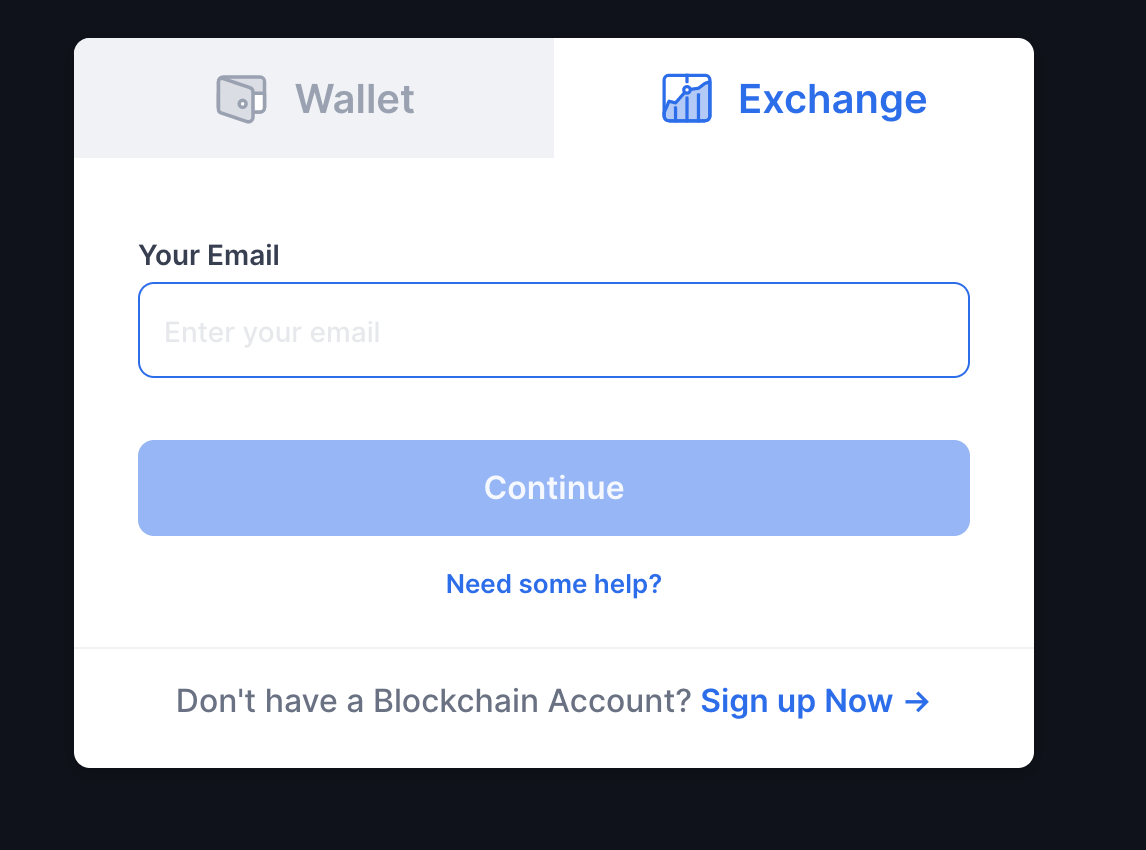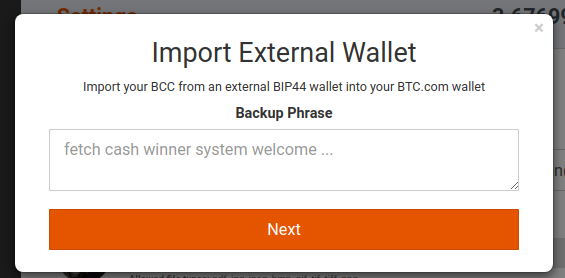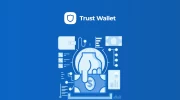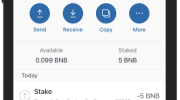Have you lost access to your blockchain wallet? Don’t panic, there are steps you can take to recover it. In this article, we will walk you through the process of retrieving your crypto wallet using a simple cluster of keywords.
The first step is to gather a list of keywords associated with your lost wallet. These keywords could be the password you used, the email address linked to the wallet, or any other information that might be relevant. Once you have this list, you can move on to the next step.
Next, you need to restore your wallet by accessing the blockchain platform. Go to the official blockchain website and click on the “Recover Wallet” option. This will take you to a page where you will be asked to enter your keywords. Make sure to enter them accurately to increase the chances of successful retrieval.
Once you have entered the keywords, the blockchain platform will initiate a search in its database to retrieve your crypto wallet. This process may take some time depending on the complexity of your keywords and the size of the blockchain. Stay patient and avoid any distractions as the retrieval is in progress.
Finally, if the blockchain is able to retrieve your crypto wallet, you will be notified and given instructions on how to regain access. Follow these instructions carefully to recover your wallet and secure your funds. If the retrieval is unsuccessful, don’t lose hope. You can reach out to the blockchain support team for further assistance and guidance.
In conclusion, losing access to your blockchain wallet can be a stressful experience, but by following these steps and utilizing the power of keywords, you can increase your chances of successful recovery. Remember to stay calm and be diligent throughout the process. Your crypto wallet can be restored, and your funds can be retrieved.
- Step 1: Assess the Situation
- Step 2: Check for Backup Options
- Step 3: Contact Blockchain Support
- Step 4: Providing Required Information
- Step 5: Verify Your Identity
- Step 6: Follow Recovery Process
- Step 7: Set a New Password
- Step 8: Enable Two-Factor Authentication
- Step 9: Update Security Measures
- 1. Enable Two-Factor Authentication (2FA)
- 2. Create a Strong Password
- 3. Use a Hardware Wallet
- 4. Stay Updated on Security News
- 5. Enable Notifications
- 6. Be Cautious of Phishing Attempts
- 7. Consider a Multisig Wallet
- Step 10: Safeguard Your Wallet Recovery Information
- Frequently asked questions:
- What should I do if I forgot my Blockchain wallet password?
- Can I recover my Blockchain wallet if I lost my recovery phrase?
- What is the process to retrieve a Blockchain wallet?
- Is it possible to restore a deleted Blockchain wallet?
- What should I do if my Blockchain wallet gets hacked?
- Can I recover a lost cryptocurrency wallet?
- Videos:
- How to Restore a Bitcoin Wallet from a Seed (Blockchain.com) | Recover Crypto wallet | Crypto Ustaad
- How to recover lost bitcoin | how to find lost bitcoin wallet | find lost bitcoins
Step 1: Assess the Situation
When dealing with a situation where you need to recover your blockchain wallet, it’s important to assess the situation thoroughly before taking any steps.
Here are some steps to assess the situation:
- Identify the Problem: Determine what exactly is the issue you are facing with your blockchain wallet. Whether you have lost your password, your wallet is not syncing, or you are unable to access your funds, understanding the problem is crucial in devising the right solution.
- Keywords and Information: Identify any keywords or information related to your wallet or account. These could include your wallet address, recovery phrase, or any other details that might help in the recovery process. Make a list of these keywords and keep them handy for the next steps.
- Check Blockchain Status: Verify if the blockchain network is running smoothly or if there are any ongoing issues. This can be done by checking reputable blockchain status websites or forums. If the blockchain is experiencing downtime or technical difficulties, it might be affecting your ability to retrieve your wallet.
- Contact Blockchain Support: Reach out to the official support team of the blockchain platform you are using. Explain your situation and provide them with all the relevant information. They will be able to guide you on the necessary steps to recover your wallet or provide further assistance.
- Seek Professional Help: If the issue seems more complex or if you are unable to resolve it on your own, consider reaching out to professional crypto recovery services. These services specialize in helping individuals retrieve lost or inaccessible wallets and can offer advanced techniques and tools to recover your blockchain wallet.
Assessing the situation is the first step towards recovering your blockchain wallet. By following these steps, you can gather the necessary information and take appropriate actions to restore access to your wallet and funds.
Step 2: Check for Backup Options

Once you have realized that your wallet is lost or inaccessible, it is crucial to check for backup options. Blockchain wallets often provide users with different ways to retrieve their lost or forgotten account information.
Here are some common backup options that you can explore:
-
Backup Phrase: One of the essential features of a Blockchain wallet is the backup phrase. It is a sequence of words that you set up when creating your wallet. This backup phrase acts as a recovery key and can be used to restore your wallet in case it gets lost or damaged. Check if you have securely stored your backup phrase and use it to restore your wallet.
-
Private Key: A private key is a unique string of characters that is associated with your wallet and grants you access to your funds. If you have saved your private key, you can import it into a new wallet to restore your account.
-
Recovery Email: Some blockchain wallets allow users to link their email addresses to their accounts. If you have linked an email address, check your inbox or spam folder for any recovery options or instructions sent by the wallet provider.
-
Customer Support: If you have exhausted all other options, reaching out to the blockchain wallet’s customer support can be helpful. They may have additional recovery methods or advice specific to your situation.
Remember to always refer to the official documentation or support resources provided by your blockchain wallet provider when attempting to restore your wallet. Following their instructions and guidance will ensure a smoother recovery process.
Step 3: Contact Blockchain Support
If you have followed the previous steps and still cannot retrieve your wallet, it is time to reach out to blockchain support for assistance. The blockchain support team is highly trained and experienced in helping users recover their lost or inaccessible wallets.
When contacting blockchain support, make sure to provide them with all the necessary information to help them better understand your situation. Include details such as your blockchain username, the email address associated with your wallet, and any relevant transaction or wallet recovery keywords.
Blockchain support operates a robust support system and usually responds to inquiries within a reasonable timeframe. You can contact them through their website or email, which are both available on their official website.
Before reaching out to blockchain support, it is advisable to check their website for any self-help resources or FAQs that may address your issue. Sometimes, you might find a solution and be able to retrieve your wallet without further assistance.
However, if you are unable to resolve the issue on your own, don’t hesitate to contact blockchain support for further guidance. They will guide you through the necessary steps to recover your wallet or connect you with a specialized support agent who can help you navigate through the recovery process.
Step 4: Providing Required Information

Once you have identified the blockchain wallet that you want to recover, the next step is to provide the required information to initiate the restore process.
The blockchain wallet recovery process typically involves verifying your identity and ownership of the wallet. The exact information required may vary depending on the wallet provider and the specific circumstances of your recovery request. However, here is a general list of information that you may be asked to provide:
- Your blockchain wallet address
- Any associated email addresses
- Relevant transaction details, such as recent transactions or transaction IDs
- Any related account or login information
- Proof of ownership, such as private keys or seed phrases
- Identification documents, such as a passport or driver’s license
It is important to ensure that you provide accurate and complete information to avoid delays or complications in the recovery process.
Some wallet providers may have a dedicated support team that you can contact to initiate the recovery process. In other cases, you may need to submit a support ticket or fill out a recovery form on the wallet provider’s website. Be sure to follow the specific instructions provided by the wallet provider.
Remember to keep a record of any communication or documentation related to the wallet recovery process. This can help you in case you need to provide additional information or follow up on your recovery request.
Once you have provided the required information, the blockchain wallet provider will review your request and initiate the necessary steps to recover your wallet. This may involve accessing backups or restoring the wallet from a cluster of nodes in the blockchain network.
Keep in mind that the recovery process can take some time, especially if additional verification or investigation is required. Be patient and follow up with the wallet provider if necessary.
Step 5: Verify Your Identity
After you have successfully restored your Blockchain wallet and retrieved your crypto, it is important to verify your identity to ensure the security of your account. Verifying your identity adds an extra layer of protection and helps prevent unauthorized access to your wallet and funds.
To verify your identity on Blockchain, follow these steps:
- Go to the Blockchain website and log in to your wallet using your credentials.
- Once logged in, navigate to the “Security” or “Settings” section of your account. This can usually be found in the top-right corner of the website.
- Look for the “Identity Verification” or “Verify Identity” option and click on it.
- Follow the on-screen instructions to complete the identity verification process. This may require you to provide personal information and supporting documents, such as a valid government-issued ID or proof of address.
- After submitting the necessary information, your identity verification request will be processed by the Blockchain team.
- You will receive a notification once your identity has been successfully verified. This may take some time, so be patient.
- Once your identity is verified, you can enjoy enhanced security features and peace of mind knowing that your account is protected.
Remember to keep your login credentials and personal information secure at all times. Avoid sharing sensitive information with anyone and regularly update your password to further protect your Blockchain wallet.
By verifying your identity, you help maintain the integrity of the Blockchain cluster, ensuring that only legitimate users can access and transact with their crypto in a secure and reliable manner.
Step 6: Follow Recovery Process
Once you have obtained your recovery phrase or private keys, you can begin the process of restoring your wallet. This step is crucial to retrieve your lost or forgotten crypto funds.
Follow these steps to recover your blockchain wallet:
- Open the blockchain wallet application on your device or access the blockchain website.
- Click on the “Restore” or “Recover” option, usually located in the login or settings section.
- Enter the recovery phrase or private keys you previously obtained. Make sure to enter the correct order and double-check for any spelling mistakes.
- Click on the “Restore” or “Recover” button to initiate the recovery process. This action will trigger the blockchain network to search for your wallet in its crypto cluster.
- Wait for the recovery process to complete. The time it takes may vary depending on the blockchain network’s current activity.
- Once the recovery is successful, you will be able to access your wallet and retrieve your crypto funds.
It is important to note that the recovery process may differ slightly depending on the specific wallet or platform you are using. Always refer to the official documentation or support resources provided by your wallet provider for accurate instructions.
By following these steps, you will be able to successfully recover your blockchain wallet and regain access to your lost or forgotten crypto assets.
Step 7: Set a New Password

After successfully completing the previous steps to restore and recover your Blockchain wallet, the next important step is to set a new password. This is crucial to ensure the security and protection of your wallet and funds.
When choosing a new password, it is important to create a strong and unique password that is difficult for others to guess. Avoid using common words, personal information, or simple combinations such as “123456” or “password”. Instead, consider using a combination of uppercase and lowercase letters, numbers, and special characters to make it more secure.
You should also ensure that your new password is not related to any previous passwords that you have used before. Using a unique password for your Blockchain wallet will add an extra layer of security and help protect your funds.
It is generally recommended to change passwords periodically to minimize the risk of unauthorized access to your wallet. Keeping your password secure is essential to safeguard your crypto assets.
It is important to note that Blockchain does not have access to your password and cannot retrieve it for you. Therefore, it is essential to keep your password safe and to choose a password that you can easily remember but that is difficult for others to guess.
Make sure to store your new password in a secure place, such as a password manager or a physical location that is accessible only to you.
By following this step and setting a new password, you will increase the security of your Blockchain wallet and ensure that your crypto assets are well protected.
Step 8: Enable Two-Factor Authentication
Enabling two-factor authentication (2FA) adds an extra layer of security to your Blockchain wallet. It provides an additional step for verifying your identity when logging in, making it harder for unauthorized individuals to access your account.
To enable 2FA on your Blockchain wallet, follow these steps:
- Log in to your Blockchain account using your credentials.
- Click on the “Security Center” option located in the main menu.
- Under the “Two-Factor Authentication” section, click on the “Enable” button.
- Choose the 2FA method you prefer:
- SMS Authentication: Enter your phone number and click on the “Send SMS” button. You will receive a verification code on your phone, which you need to enter in the provided field. Click on the “Verify” button to complete the setup.
- Google Authenticator: Install the Google Authenticator app on your smartphone or tablet. Open the app and scan the QR code shown on the screen. Alternatively, you can manually enter the provided key into the app. The app will generate a 6-digit code, which you need to enter in the provided field. Click on the “Verify” button to complete the setup.
Once you have successfully enabled 2FA, you will need to enter the verification code generated by your chosen method whenever you log in to your Blockchain wallet. This adds an extra layer of protection against unauthorized access, helping to keep your crypto assets secure.
Step 9: Update Security Measures
Ensuring the security of your blockchain wallet is crucial to protect your digital assets. After recovering your wallet, it is essential to update your security measures to prevent any future unauthorized access.
To enhance the security of your blockchain wallet, consider following these measures:
1. Enable Two-Factor Authentication (2FA)
Activate the two-factor authentication feature provided by the blockchain platform. This adds an extra layer of security by requiring a second form of verification, such as a unique code sent to your mobile device, in addition to your login credentials.
2. Create a Strong Password

Make sure your new password is unique, complex, and difficult to guess. Combine uppercase and lowercase letters, numbers, and special characters to create a strong password that is not easily compromised.
3. Use a Hardware Wallet

Consider using a hardware wallet, such as Ledger or Trezor, to store your crypto assets offline. These wallets offer additional security by keeping your private keys offline, away from potential online threats.
4. Stay Updated on Security News
Stay informed about the latest security news and best practices in the blockchain and crypto industry. Regularly check for any security updates or patches provided by the blockchain platform and install them promptly.
5. Enable Notifications

Enable notifications on your blockchain wallet to receive alerts for any suspicious activities or login attempts. This will allow you to take immediate action if any unauthorized access is detected.
6. Be Cautious of Phishing Attempts
Be vigilant and cautious of phishing attempts. Avoid clicking on suspicious links, sharing your login credentials, or entering your wallet information on untrusted websites. Always double-check the URL and ensure it is the official blockchain platform.
7. Consider a Multisig Wallet
A multisig wallet requires multiple signatures to authorize a transaction. Consider using a multisig wallet to add an extra layer of security, as it would require multiple devices or parties to approve any transaction.
By implementing these security measures, you can significantly enhance the protection of your blockchain wallet and minimize the risk of unauthorized access or loss of your crypto assets.
Step 10: Safeguard Your Wallet Recovery Information

Once you have successfully recovered your blockchain wallet, it is crucial to safeguard your wallet recovery information to prevent any potential loss of access to your funds in the future. Here are some important steps to consider:
- Store Your Wallet Recovery Phrase Securely: Your wallet recovery phrase is a list of words that can be used to retrieve your wallet in case you lose access. Write down this phrase on a physical paper and store it in a safe place, away from prying eyes and potential damage. Consider using a fireproof and waterproof safe or a safety deposit box for added security.
- Use Offline Storage: Consider storing a digital copy of your wallet recovery information on an offline storage device, such as a USB drive or an external hard drive. Make sure to encrypt the file and store it in a secure location.
- Employ Password Protection: If you choose to store your wallet recovery information digitally, make sure to password protect the file or folder containing the information. Use a strong and unique password that is not easily guessable.
- Consider a Multisig Wallet: A multisig wallet requires multiple signatures to authorize transactions, providing an added layer of security. Consider using a multisig wallet for storing a portion of your funds, spreading the risk across different devices or individuals.
- Regularly Update your Recovery Information: As you continue to use your wallet, update your recovery information if necessary. This includes generating new wallet recovery phrases and updating your stored information accordingly.
By following these steps to safeguard your wallet recovery information, you minimize the risk of losing access to your funds and ensure that you can restore your wallet whenever needed. Remember to always prioritize security when dealing with cryptocurrencies and blockchain wallets.
Frequently asked questions:
What should I do if I forgot my Blockchain wallet password?
If you forgot your Blockchain wallet password, you can initiate the recovery process by clicking on the “Forgot password” option on the login page. Follow the instructions to reset your password and regain access to your wallet.
Can I recover my Blockchain wallet if I lost my recovery phrase?
If you lost your recovery phrase for your Blockchain wallet, it becomes more difficult to recover your wallet. However, you can try reaching out to the Blockchain support team and provide them with any details or information you can remember about your wallet. They may be able to assist you in recovering your wallet.
What is the process to retrieve a Blockchain wallet?
To retrieve a Blockchain wallet, you need to visit the Blockchain website and click on the “Login” button. Enter your email address and password to access your wallet. If you forgot your password, you can initiate the recovery process by clicking on the “Forgot password” option on the login page.
Is it possible to restore a deleted Blockchain wallet?
Unfortunately, once a Blockchain wallet is deleted, it cannot be restored. It is important to always keep a backup of your wallet and securely store your recovery phrase to prevent permanent loss of your funds.
What should I do if my Blockchain wallet gets hacked?
If you suspect that your Blockchain wallet has been hacked, it is important to take immediate action. Contact the Blockchain support team and report the incident. They will guide you through the necessary steps to secure your account and may be able to assist in recovering any lost funds.
Can I recover a lost cryptocurrency wallet?
Recovering a lost cryptocurrency wallet can be difficult, especially if you do not have access to your recovery phrase. It is important to always keep backups of your wallet and securely store your recovery phrase. If you have lost your wallet, it is advisable to reach out to the support team of the specific cryptocurrency you lost and provide them with any information you can remember to increase your chances of recovering your wallet.
Videos:
How to Restore a Bitcoin Wallet from a Seed (Blockchain.com) | Recover Crypto wallet | Crypto Ustaad
How to recover lost bitcoin | how to find lost bitcoin wallet | find lost bitcoins








